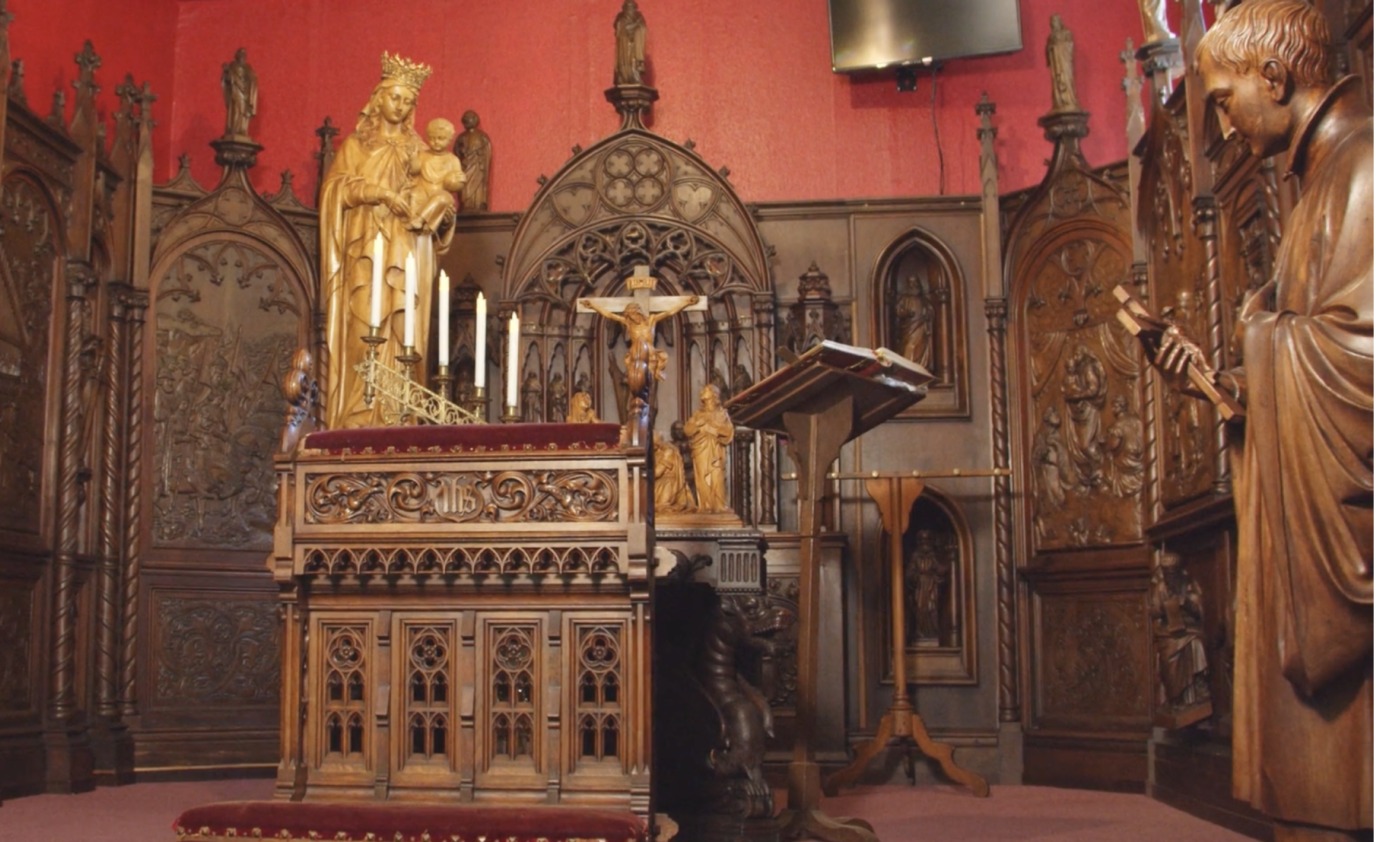The wainscotting in Museum Janning
In the Janning Museum in Nieuw-Schoonebeek, Drenthe, there is an interesting piece of church paneling; a wooden wall decoration commonly used in churches. It originates from a Protestant church in former East Germany and is inspired by famous works by, among others, Van Eyck and Raphael. This artwork has sparked the curiosity of many art historians, which is why four students from the University of Groningen, Feyona Voerman, Sofie Kuipers, Klarissa Groen, and Caroline Roelfzema, took on the challenge to investigate it.
Little research available
Since little (art)historical research had been done on the paneling, museum owners Margreth Eikens and André Zwake were eager to learn more. For this study, the four aspiring art historians delved into the origins of the paneling, examining themes in the woodwork through visual analysis and historical research. In addition, the students developed engaging texts for an information board and for the museum’s website.

Origin and artists
During their research, the students discovered that the artwork came into the museum's possession through Father Janning, the man after whom the museum is named. The presumed origin is the now-demolished St. Nikolai Church in Langenstein, a town in former East Germany. The church was built in 1888 and demolished in 1977, the same year Father Janning acquired the paneling. The students identified several figures in the artwork and concluded that the paneling was likely created in multiple phases, given the varying styles and skill levels. The paneling features a Neo-Gothic design with iconographic elements such as saints and evangelists, and it draws inspiration from renowned works by Van Eyck and Raphael.
